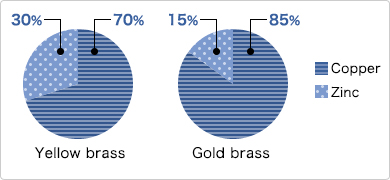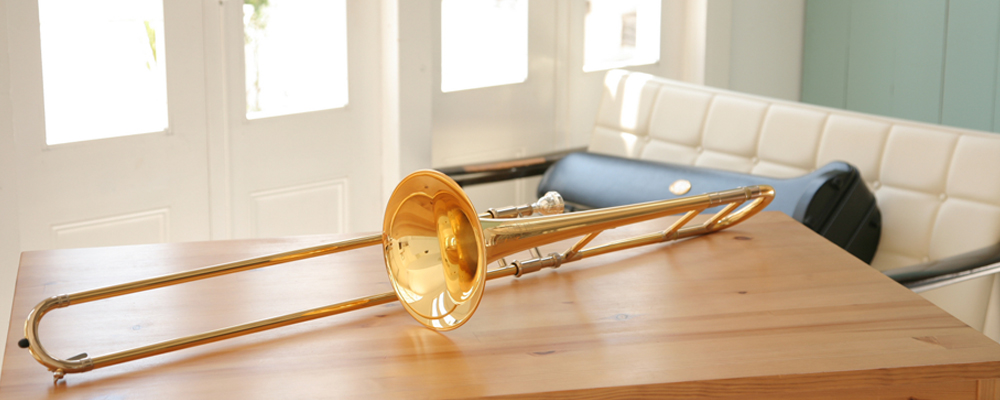Choosing a Trombone
Choosing by material
The material of the tubing affects the timbre!
The timbre of a wind instrument is determined by the vibration (waveform) of the column of air shaped by the tubing. In addition to the shape of the instrument and the length of the tubing, the material used for the vibrating tube can have a subtle effect on the timbre.
Brass has been used since long ago to form the body of trombones and other brass instruments. Brass is a copper and zinc alloy that is easy to work with and is more resistant to corrosion than metals such as iron. Brass also happens to look wonderful. The sound brass creates has played a major role in shaping the image that brass instruments now enjoy.
Brass instruments offer a variety of timbres based on the type of brass (i.e. the ratio of copper and zinc) used for the bell.
Bell material and timbre
| Yellow brass | Bright and forceful timbre |
|---|---|
| Gold brass | Wide and full timbre |

Ratios of copper and zinc used in yellow brass and gold brass
The surface finish affects the sound!
When making an instrument, finished metal tubes are filed and sanded to make their surface smooth as glass, and then they are coated with a polish and buffed with a high-speed buffer to give them that beautiful metallic shine. Finally, lacquer or plating is applied. Although the main reason for this final finish is to protect the metal from rust and dirt, it also has a subtle effect on the timbre.
Surface finish and timbre
| Gold lacquer (Lacquer coating that is a blend of gold-colored paints) |
Sharp, powerful sound |
|---|---|
| Clear lacquer (Transparent lacquer coating) |
Somber, solid sound Clear definition at loud volume |
Choosing a mouthpiece material
Most mouthpieces are made from plated brass. This is also the case for Yamaha trombone mouthpieces. Silver mouthpieces are silver-plated and are the standard models offered by Yamaha. There are many models to choose from. Gold mouthpieces are gold-plated and provide a very smooth feel when pressed to the lips. Yamaha sells these as custom models.
Note that there are two types of mouthpieces: those with small shanks and those with large shanks. It's a good idea to try both types before deciding which to go with.
Musical Instrument Guide:Trombone Contents
Structure
How to Play
How the Instrument is Made
Choosing an Instrument
Care and Maintenance
Trivia
- God is in the trombone
- The trombone was a bit of a problem for cavalries...
- A trombone that would scare even a snake!
- Two instruments, both tenor, but quite different!
- A trombone player walks into pawnshop...
- You can trill just by moving your mouth
- It is possible to increase the pitch even as you extend the slide
- Famous pieces from trombone concertos
- Orchestra pieces in which the trombone plays an important role
- The Yamaha quartet
- For trombones, why does sheet music notation differ from the fundamental tone of the instrument?
- A bass trombone-with an F attachment only

